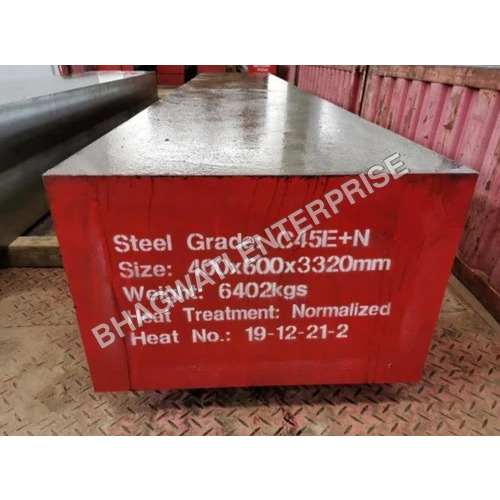High Speed Tool Steel Flat Bar
High Speed Tool Steel Flat Bar Specification
- Type
- Flat bar
- Grade
- P20/H13
- Material
- High Speed Steel
- Standard
- New
- Finish
- Coated
- Specific Use
- For construction
High Speed Tool Steel Flat Bar Trade Information
- Minimum Order Quantity
- 100 Kilograms
- Payment Terms
- Cash Against Delivery (CAD), Cash on Delivery (COD), Cash Advance (CA), Cash in Advance (CID), Cheque
- Supply Ability
- 5000 Kilograms Per Month
- Delivery Time
- 1 Days
- Sample Policy
- Sample costs shipping and taxes has to be paid by the buyer
- Packaging Details
- Loose
- Main Export Market(s)
- Asia
- Main Domestic Market
- All India
- Certifications
- Mill T.C.
About High Speed Tool Steel Flat Bar
We are engaged in offeringHigh Speed Tool Steel Flat Barto our clients. Our range of all products is widely appreciatHigh-speed steel (HSS) isa set of 40+ tool steel alloys that consist of carbon steel, alloyed with more than 7% tungsten or molybdenum, together with percentages of chromium, vanadium and cobalt. HSS are used as cutting tool material and machine parts in demanding high-speed machining applications.-
High Speed Steel (HSS)
-
M2 High Speed Steel
-
M35 High Speed Steel
-
M42 High Speed Steel
-
T1 High Speed Steel
-
Cobalt High Speed Steel
-
Tool Steel HSS
-
Tungsten HSS
-
Hardened Steel HSS
-
Annealed HSS
-
Wholesale HSS Steel Suppliers In Gujrat
-
Automotive Tooling Steel
- Bhagwati Enterprise is one of the Leading Manufacturer and Supplier of Tool Steel Accross Pan India.
- Die Steel, Tool Steel , Plastic Mould Steel Quality Suppliers in india
| Thickness | 20 mm |
| Usage/Application | Construction |
| Shape | Flat |
| Single Piece Length | MTR |
| Single Piece Lengh | 9 meter |
| Technique | Hot Rolled |
| Finishing | Mill Finishing |
| Brand | Bhagwati Enterprise |
| Bar Material | Tool Steel |
| Country of Origin | Made in India |


Price:
- 50
- 100
- 200
- 250
- 500
- 1000+
More Products in Steel Bars Category
C45 Block For Plastic Steel Mould
Price 85.0 INR / Kilograms
Minimum Order Quantity : 100 Kilograms
Application : Construction
Material : Stainless Steel
Finish : Bright
Grade : SS316
Hard Chrome Round Bar
Price 580.00 INR / Kilometer
Minimum Order Quantity : 100 Kilometers
Application : Construction
Material : Stainless steel
Finish : Bright
Grade : Fe 500D
Stainless Steel 410 Round Bar
Price 95 INR / Kilograms
Minimum Order Quantity : 100 Kilograms
Application : Industrial Used
Material : SS
Finish : Polished
Grade : 410/420
Die Block Steel DB-6 Round Bar
Price 190 INR / Kilograms
Minimum Order Quantity : 100 Kilograms
Application : Industrial Used
Material : Die Steel Db6
Finish : Polished
Grade : DB6









 Send Inquiry
Send Inquiry Send SMS
Send SMS Call Me Free
Call Me Free